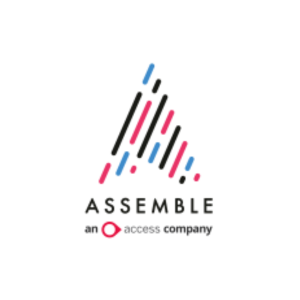Insights
INSIGHTS
All Topics
How trustees can offer support during the cost-of-living crisis
We explore the different ways that trustees and charity boards can support their organisation during a time of financial uncertainty
The cost-of-living crisis is on everyone’s minds at the moment, as soaring inflation causes rising costs, rising bills, and a general sense of uncertainty when it comes to our finances. For charities, there are three core areas of concern.
Firstly, how can they meet rising demand for their services as the crisis goes on? Secondly, how can they fund these services, with demands on their donors’ finances increasing alongside overhead costs like heating and electricity? Finally, how can charities offer support to their own employees who may be experiencing financial difficulty outside of the workplace?
How charities choose to respond to the cost-of-living crisis is an issue that needs to be addressed at the very top level of the organisation. Trustees and members of the charity board cannot ignore the crisis as it seeps into every area of their operations and demonstrably affects the wellbeing of their staff and beneficiaries.
According to the Office for National Statistics, 91% of adults in Great Britain reported an increase in their cost-of-living between October and November 2022. Furthermore, research from fundraising and events platform Enthuse found that the cost-of-living had become the greatest concern for charity donors, overtaking COVID-19.
With tensions running high, we explore how trustees and charity boards can offer their organisation vital support with better decision-making and communication.
Have productive conversations
The cost-of-living crisis is an urgent matter. Charity boards usually meet three or four times a year, with meetings lasting around two hours. Time is of the essence to sure that enough is dedicated to discussing how rising inflation is affecting the organisation and, crucially, to find the right solution.
Having productive conversations is essential to addressing the cost-of-living crisis in a timely manner. All meetings should end with actions and these should be fed back to the relevant teams as soon as possible. There is enough uncertainty around the crisis without it coming from within as well.
It is worth noting that the way we hold meetings has changed a lot since COVID-19. Remote or hybrid meetings have become far more normalised, which is both good and challenging. It can save travel time, make it easier for all people involved to attend meetings, and generally improve how people collaborate.
However, poor connections, late arrivals, and the inability to share materials remotely can provide sticking points that boards must overcome.
As board management software providers OnBoard notes in its Virtual Meetings toolkit, “For executive and productive virtual board meetings, directors must take actions to be better prepared, more highly organized, and engage more collaboratively than they would for in-person meetings.”
Nearly half (49%) of respondents to the Board Effectiveness survey said that a more engaged board is a primary driver of effectiveness, with “better preparedness” being a clear secondary driver. OnBoard’s meeting toolkit suggests that boards implement a strong agenda, with comprehensive board materials distributed well ahead of the meeting.
Board members should have their cameras on where possible, to ensure that everyone is taken into consideration during decision making and take notes that are easily available to view for all members. Always follow up on meeting goals and actions – it is vital that the former are addressed by the latter and that actions, especially during a crisis, are not delayed.
Prioritise board diversity
One of the best ways to ensure that everyone in your organisation feels represented and supported is to commit to board diversity. Board diversity ensures that there are a variety of voices shared around the board room, with differing viewpoints, which can have a vast impact on decision-making and reducing risk.
The cost-of-living crisis is a fraught topic simply because of the stresses and uncertainty that comes with it. It is more important than ever that employees feel they have a voice on the board and, at the least, their interests are being represented. Decisions may be made differently with their voices heard.
Likewise, a diverse board comprising trustees with different backgrounds, experiences, and skillsets also means that potentially problematic decisions – like those that could appear tone-deaf in a crisis – are more likely to be flagged early on.
It is also vital that all decisions made at board level are communicated fully to the rest of the organisation, particularly those affected directly by the decision. Boards should, where possible, explain their reasoning and ensure that there are ways that employees can ask questions if needed.
Failure to communicate effectively can lead to a sense of division and it is crucial to charities, particularly in a crisis, that everyone feels united in the aim and direction of their organisation.
Download the Board Effectiveness Survey
Click above to download OnBoard’s Board Effectiveness Survey 2022 and discover how your charity board can better support employees.
If you would like to start your free trial today, sign up now.
Laura Stanley
More on this topic
Recommended Products
Our Events
Charity Digital Academy
Our courses aim, in just three hours, to enhance soft skills and hard skills, boost your knowledge of finance and artificial intelligence, and supercharge your digital capabilities. Check out some of the incredible options by clicking here.






















